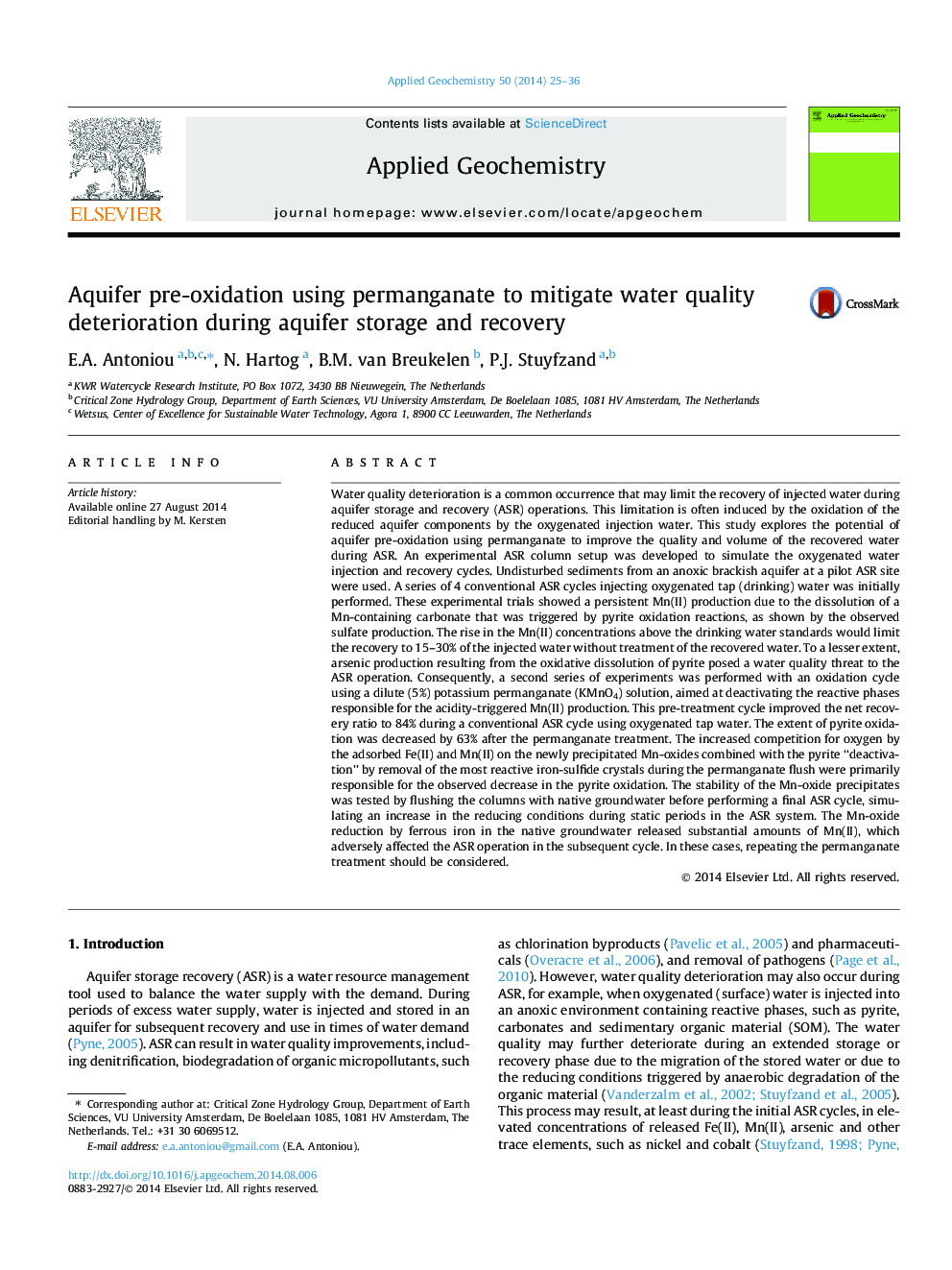| کد مقاله | کد نشریه | سال انتشار | مقاله انگلیسی | نسخه تمام متن |
|---|---|---|---|---|
| 6335163 | 1620241 | 2014 | 12 صفحه PDF | دانلود رایگان |
- Bi-directional column installation to simulate ASR injection and recovery cycles.
- Benefits of aquifer pre-treatment with MnO4 on recovered water quality during ASR.
- Effects of resaturation with native groundwater simulating operational downtime.
Water quality deterioration is a common occurrence that may limit the recovery of injected water during aquifer storage and recovery (ASR) operations. This limitation is often induced by the oxidation of the reduced aquifer components by the oxygenated injection water. This study explores the potential of aquifer pre-oxidation using permanganate to improve the quality and volume of the recovered water during ASR. An experimental ASR column setup was developed to simulate the oxygenated water injection and recovery cycles. Undisturbed sediments from an anoxic brackish aquifer at a pilot ASR site were used. A series of 4 conventional ASR cycles injecting oxygenated tap (drinking) water was initially performed. These experimental trials showed a persistent Mn(II) production due to the dissolution of a Mn-containing carbonate that was triggered by pyrite oxidation reactions, as shown by the observed sulfate production. The rise in the Mn(II) concentrations above the drinking water standards would limit the recovery to 15-30% of the injected water without treatment of the recovered water. To a lesser extent, arsenic production resulting from the oxidative dissolution of pyrite posed a water quality threat to the ASR operation. Consequently, a second series of experiments was performed with an oxidation cycle using a dilute (5%) potassium permanganate (KMnO4) solution, aimed at deactivating the reactive phases responsible for the acidity-triggered Mn(II) production. This pre-treatment cycle improved the net recovery ratio to 84% during a conventional ASR cycle using oxygenated tap water. The extent of pyrite oxidation was decreased by 63% after the permanganate treatment. The increased competition for oxygen by the adsorbed Fe(II) and Mn(II) on the newly precipitated Mn-oxides combined with the pyrite “deactivation” by removal of the most reactive iron-sulfide crystals during the permanganate flush were primarily responsible for the observed decrease in the pyrite oxidation. The stability of the Mn-oxide precipitates was tested by flushing the columns with native groundwater before performing a final ASR cycle, simulating an increase in the reducing conditions during static periods in the ASR system. The Mn-oxide reduction by ferrous iron in the native groundwater released substantial amounts of Mn(II), which adversely affected the ASR operation in the subsequent cycle. In these cases, repeating the permanganate treatment should be considered.
Journal: Applied Geochemistry - Volume 50, November 2014, Pages 25-36
